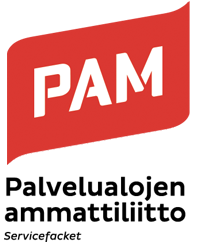How cleaners’ wages increased
Cleaners’ entry-level wages as per the pay scales in place have gradually reached a level equivalent to the wages paid to waiters and sales assistants, but there are differences in terms of their average earnings. A major earnings development programme carried out in the facilities services sector over a period of several years has now been completed.
The earnings development programme was agreed for caretakers and cleaners in 2009, in order to remove the wage gap between cleaners, in particular, and other private service sectors. The programme included 16.5% increases in the wages specified in the pay scales, which would focus in particular on the lowest wages and would be added on top of across-the-board increases payable to everyone.
The programme will complete in April. That’s when the pay scales will be topped up with the last 1.25% increase agreed under the terms of the programme.
Comparing the hourly pay-scale wages of cleaners, waiters and sales assistants, PAM Bargaining Specialist Jarkko Viitanen concludes that the target has been achieved.
‘The entry-level pay is now more or less the same.’
As from 1 April, a cleaner’s hourly wage is 10.33 euros in the most frequently applied job grade 2. A waiter’s hourly wage is 10.14 euros in restaurants not licensed to serve alcohol, while a sales assistant earns 10.67 euros per hour outside the Helsinki Metropolitan Area. Differences start to accumulate during employment, as cleaning sector employees do not receive seniority increments, unlike those working in the commercial sector and in hotel, restaurant and leisure services.
According to pay statistics collected by the Confederation of Finnish Industries (EK), the income level of cleaners increased by a total of 14.2% over the period from 2010 to 2015. Increases in the commercial sector and in hotel, restaurant and leisure services stood at 7.8% and 8.2%, respectively.
‘But when you start from a low level, the increase in euro terms is a different story,’ says Viitanen.
In terms of average earnings, the cleaning sector still has some catching up to do. In 2015, cleaners’ average earnings amounted to 1,814 euros per month, while the figures for employees in hotel, restaurant and leisure services and sales assistants stood at 2,141 and 2,297 euros per month, respectively. The average earnings collected in the EK statistics are based on regular earnings, excluding items such as overtime pay, evening pay and any other allowances based on working hours. As cleaners are included in the statistics for hourly workers, their earnings have been converted here into monthly amounts.
These statistics do not yet include the last two increases under the terms of the programme.
The earnings development programme was harshly criticised by employees, especially in its early stages. Those with personal allowances failed to see any pay increases. Increases were added to pay-scale wages, but drift-based and contractual wages did not increase. Personal pay components seemed to shrink, while total earnings remained the same.
‘In recent years, the cleaning sector in particular has caught up and even overtaken almost all wage drifts,’ Viitanen says.
The programme mostly focused on cleaners, who are mainly on an hourly wage, and – to a lesser extent – on caretakers, who primarily receive monthly contractual pay.
‘Caretakers mainly received pay increases outside the growth centres of Southern Finland, where more people work for pay-scale wages.’
A new common pay system for cleaners and caretakers became effective at around the same time as the programme, causing a stir at workplaces. The system is based on scoring jobs and ranking them into ten job grades.
The new pay system eliminated cleaners’ premium pay for transits. Full-time employees lost money, whereas part-time workers ended up benefiting from this change, according to Viitanen. Their periods of transit from one site to another are now considered to be paid working hours, and their daily working hours became more clearly defined.
Viitanen muses that an earnings development programme with such a wide scope is a rarity. Employer and employee organisations wanted to work together to raise cleaners’ wages to a competitive level, thus improving appreciation for the sector. The employer side wanted to make the cleaning sector attractive enough to keep people from moving on to other jobs.
It is also true that employers agreed to the pay increases in exchange for the employee side’s consent to combine the collective agreements governing caretakers and cleaners.
The increases included in the earnings development programme were agreed on an annual basis. Once in a while, there was some friction, and employees staged walkouts to further the process. Viitanen is satisfied that the parties managed to complete the programme, albeit slightly behind schedule. The programme was originally due to end in 2015.
‘In terms of timing, the programme hit a sweet spot when across-the-board increases were small.’
Even now, the wages discussed here are by no means huge. In the 2015 EK statistics, a cleaner’s average hourly wage was more than six euros lower than that of an industrial worker.
Jari Paksuniemi, chief shop steward at ISS Palvelut in Rovaniemi, chairs PAM’s Agreement Sector Commission for the Facilities Sector.
‘The earnings development programme has been good in that the sector would have fallen really far behind without it in terms of pay levels. But the question bugging me is: where do we go from here?’
Paksuniemi would start improving the pay system. At present, the employers broadly get to decide the job grade to which each job is assigned. This is reflected in the pay level.
Viitanen finds it unfortunate that most employees fall within job grades 2, 3 and 4 in a 10-step system. In his view, there should be a group that would decide an employee’s job grade in cases of dispute.
Increases under the earnings development programme
Signatory parties: PAM and Real Estate Employers.
Timing of increases: 2009: 3%; 2012: 2.5% + a wage-lag supplement of €0.05/hour as part of the across-the-board increase; 2013: 3.5% + a wage-lag supplement of €0.03/hour as part of the across-the-board increase; 2014: 2.5%; 2016: 2.6%; 2017: 1.25%.
Text:: Marja Ikkala



